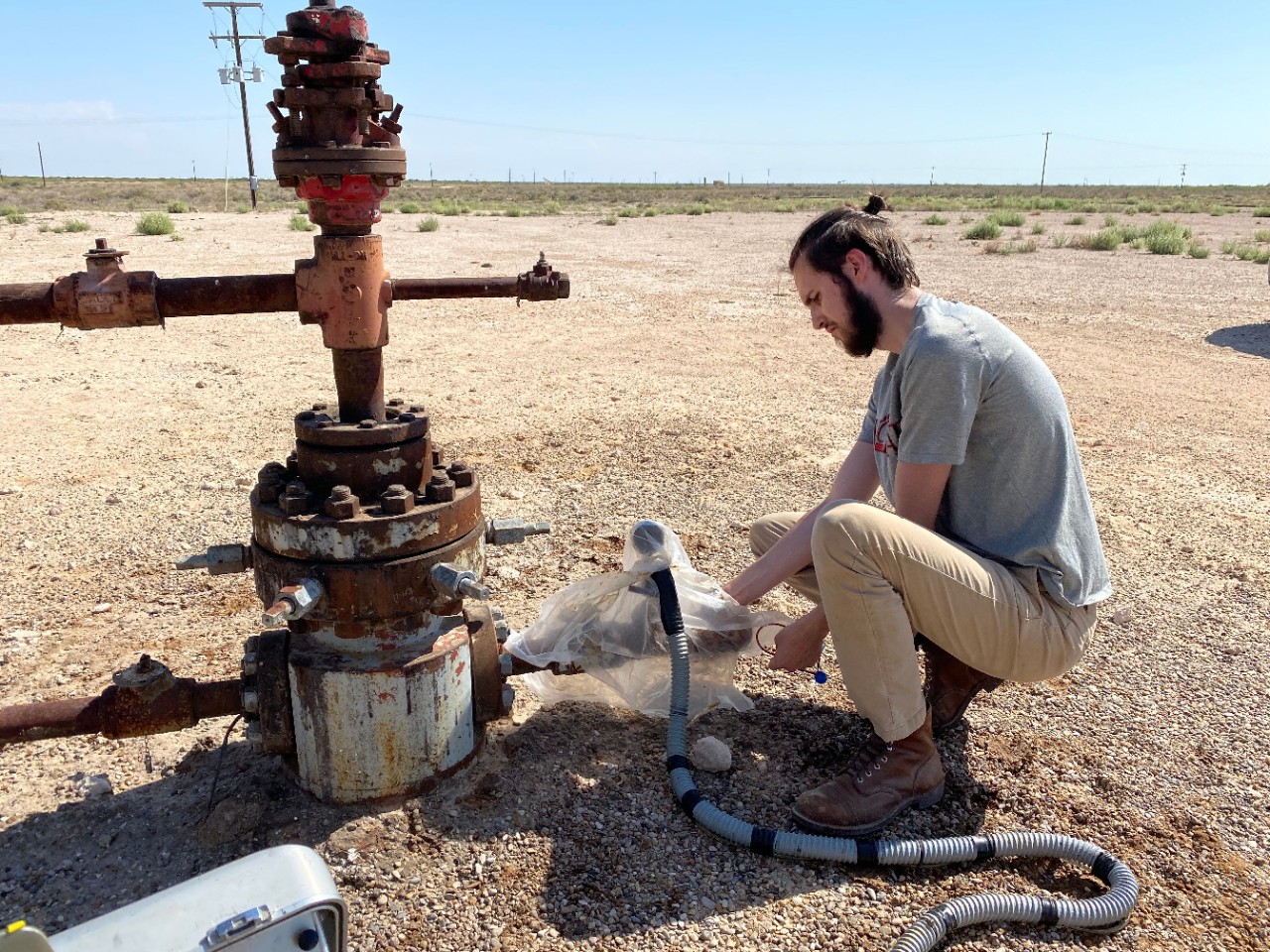
Bloomberg: Failed wells are polluters nobody watches
UC environmental studies professor talks about leaky oil and gas wells
Bloomberg Law turned to a University of Cincinnati expert on leaky oil and gas wells to explain why even capping them is no guarantee that they will not one day create environmental problems.
Companies are obligated to plug oil or gas wells that are no longer productive so they don't pollute the air or water. But some companies simply abandon them to avoid the costs.
Abandoned oil and gas wells can pollute drinking water and leak methane into the atmosphere, contributing to climate change.
The United States could have as many as 3.5 million abandoned or orphaned wells, left behind by companies that have gone out of business or for which there are no regulatory records.

Amy Townsend-Small. Photo/Jay Yocis/UC
But according to Bloomberg Law, even many wells that have been plugged with concrete or other materials can fail over time. And since there is little government monitoring, nobody knows the full extent of the problem.
UC College of Arts and Sciences Professor Amy Townsend-Small teaches environmental studies. She has been studying the issue of leaking oil and gas wells across the United States.
She told Bloomberg that going back to examine capped wells has not been a priority because of the high number of uncapped wells that are leaking oil or gas.
“It would be great if all of these things could be monitored, if there was unlimited money,” she said, referring to plugged wells. “We cannot get money for this kind of research.”
Meanwhile, other energy practices could be contributing to more leaking oil and gas wells, Bloomberg reported.
Hydraulic fracturing for natural gas involves injecting wastewater and chemicals into the ground to extract natural gas. But Bloomberg found that pressure from this process has caused blowouts of nearby capped wells.
“This wastewater is corrosive because of high salt concentrations,” Townsend-Small said.
Bloomberg said Congress approved $4.7 billion in the 2021 bipartisan infrastructure law to plug wells, but there are no state or federal requirements to ensure the seals work.
Featured image at top: UC graduate Jacob Hoschouer measures methane emissions at the site of an abandoned well in Texas. Photo/Provided
Related Stories
WVXU: UC experts discuss P&G's new green policies
September 23, 2021
UC environmental studies professors Amy Townsend-Small and Robert Hyland talk to WVXU about Procter & Gamble Co.'s new policies designed to reduce the company's carbon footprint.
Regional media: UC expert talks about abandoned wells
September 15, 2022
UC College of Arts and Sciences associate professor Amy Townsend-Small talks to the WFMP program Sustainability Now! and WOSU's the Ohio Statehouse about Kentucky's leaking oil and gas wells and a new federal initiative to cap them.
Bloomberg: Failed wells are polluters nobody watches
March 13, 2024
Bloomberg talks to UC Professor Amy Townsend-Small about why even some capped wells end up leaking oil or gas and what can be done about it.
The health impact of living near a natural gas leak
June 25, 2024
UC College of Arts and Sciences Professor Amy Townsend-Small talks to the BBC about the health issues faced by neighbors of leaking natural gas wells.
UC offers new environmental studies degree
February 9, 2022
The University of Cincinnati’s College of Arts & Sciences has announced a new environmental studies bachelor of arts program to complement its current bachelor of science degree. The new interdisciplinary program will take a less scientific approach to the discipline, focusing on environmental history, philosophy, literature and writing, society and culture, and the implementation of environmental policies. The new degree is designed to to fill the areas of knowledge that environmental studies students have wanted in the curriculum, such as writing-heavy courses and a more humanities-based approach, says David Stradling, professor of history and chair of the committee for the environmental studies BA program.
UC launches school dedicated to environmental studies, solutions
August 14, 2023
The University of Cincinnati has launched its new School of Environmental Studies and Sustainability (SEaS) within the College of Arts & Sciences. “The faculty who worked to create a new unit for environmental studies were driven by the desire to improve curriculum, including adding new degrees, as well as increasing research opportunities,” says professor David Stradling, interim director of SEaS.
Feather chemistry helps track origin of birds
October 11, 2021
Researchers at the University of Cincinnati are using geology and rainfall patterns to track migratory birds of prey across North America. Using an innovative combination of isotopes from the feathers of kestrels, goshawks and other predatory birds called raptors, researchers can narrow down where the young birds likely hatched and learned to fly. This method offers a useful tool to help scientists track elusive, wide-ranging animals, identify critical habitats and observe any changes in migration patterns.
Clifton Court Hall grand opening garners detailed media coverage
September 20, 2023
The University of Cincinnati celebrated the opening of Clifton Court Hall on Tuesday, Sept. 19, with a ribbon cutting, attended by approximately 200 administrators, faculty, staff and students. The event was covered by multiple media outlets.
UC alumna explores for National Geographic
July 10, 2023
Radhika Bhargava pursues global research as a National Geographic Explorer following multiple study abroad experiences at the University of Cincinnati.
UC grad students bring geosciences to Northside Farmers Market
November 8, 2023
Families bring their children to Cincinnati’s Northside Farmers Market every Wednesday, rain or shine, for the vibrant social hub and healthy, and affordable foods. This year, a group of UC grad students has added a new feature to the 20-year-old market tradition— Science Harvest, an outreach initiative designed to share science with local communities through conversation and hands-on learning activities.
